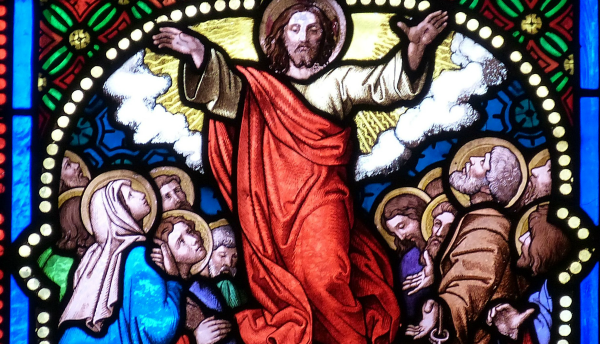The Pilgrim Church and Holiness
The concept of the Church as viator or pilgrim has caused much difficulty in the post-Vatican II Church. This is odd, as the difficulty seems to rest on a fundamental misunderstanding of why this chapter was included in the document and what the concept of “pilgrim” means. Many have interpreted this term, and the concept, to signify that there is something fundamentally evolving about the structure of the Church as a society.
In this view, the Church would be continually deconstructing and reconstructing her means for implementing authority according to the “spirit of the age.” This would suggest that she came unfinished from the hands of her Master, Christ, and further, that the structure of the episcopacy or the papacy could evolve into some whole new model of authority completely different from what it had been in the past.
Some people reflect this point by appealing to the concept of the evolution of dogma, forgetting that evolution must always be homogeneous and not heterogeneous. The Church can only deepen in its self-understanding of institutions received from the Lord. The manner of authority and the sacraments may evolve in understanding, but not so as to contradict our previous way of understanding them. One could not decide, for example, that there should only be four sacraments based on evolution of dogma. Instead, evolution builds on previous truths and practices and makes clearer how they relate to Christ.
“This Chapter (Seven) was introduced according to the will of Pope John XXIII [. . . ].” The complete title of the chapter demonstrates the doctrine taught here: “On the eschatological constitution of the pilgrim Church and her union with the heavenly Church.”
The Church only finds its final fulfillment in the communion of saints in heaven, but this does not mean that one is dealing with two substantially different societies in the earthly and heavenly Church.
In fact, they are one and the same society. They are related as imperfectly fulfilled to perfectly fulfilled. The pilgrim Church is relatively perfect according to the manner of this world, as it has all the means necessary to attain its ultimate end. It is not absolutely perfect except in the communion of saints in heaven.
The point of this chapter perfectly corresponds to the beginning of the document, where the Church was examined as a mystery. The problem is that in the post-Vatican II Church, the whole question of eschatology has become very confused. Cardinal Ratzinger pointed out in an address he gave to European theologians in 1989, that some theologians in the post-Vatican II Church have not only denied hell and purgatory, but also the existence of heaven. Many theologians now teach that the Church looks for its perfection in a human future, but not one which is outside this world. When this fact is used to interpret the concept of a Pilgrim Church, many take it to mean that through democratic evolution of structures corresponding to the “spirit of the age,” the Church will be realized as the perfect society here on earth through some egalitarian optimism.
Actually, the reflection on the Church as pilgrim underlines the connection between the hierarchical and sacramental earthly Church and the heavenly communion of saints. “The Church, to which we are all called in Christ Jesus, and in which by the grace of God we acquire holiness, will receive its perfection only in the glory of heaven, when will come the time of the renewal of all things.” This answers an idea that there will be some realized future here in this world where there will be a further revelation of the Holy Spirit than the one in Christ, who established the physical Church of the hierarchy and sacraments on Pentecost. This spiritual Church will be more perfect than the present one and will be a Church without structure or required sacraments.
According to this idea, there were three ages in the history of the world. The first was the age of the Father, which is the Old Testament. The second was the age of the Son, which is the New Testament. This would be succeeded by a new and more perfect age here on earth, the age of the Spirit. The characteristics of this age would be that there would no more physical mediators, and man would experience a direct inspiration of the Holy Spirit which would teach a Gnostic knowledge, not open to definition or judgment of any Church organ.
St. Thomas answered this idea by explaining that there are indeed three ages of the world. The first is indeed the Old Testament, which The Pilgrim Church The Pilgrim Church is the age of both the Father and the Son, realized only with the coming the Messiah. The second age is the New Testament, which is the age of the Son and the Holy Spirit, because it is only complete when the Son sends—and continually sends—the Holy Spirit to reside in his Church. This is the Church of the complete revelation, here on earth, of the Trinity in Word and Sacrament. The place of the hierarchy is necessary for this as the servant of the Word and the givers of the sacraments. This will be succeeded by a new and more perfect, third age, but this will be the heavenly Church when we shall see the Beatific Vision.
+

This article on ‘The Pilgrim Church: A Universal Call to Holiness’ is adapted from the book A Light to All Nations: On The Nature and Mission of the Church by Brian Thomas Becket Mullady, O.P. which is available from Sophia Institute Press.
Art for this post on a reflection from “A Light to All Nations: On The Nature and Mission of the Church” by Brian Thomas Becket Mullady, O.P.; cover used with permission; Photo by WP.




